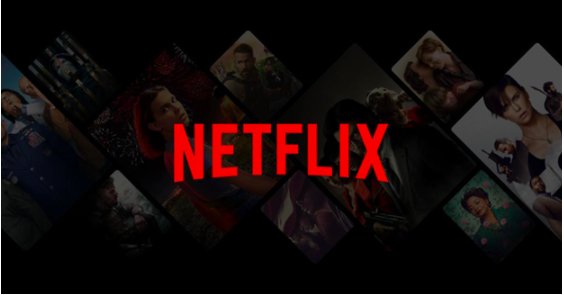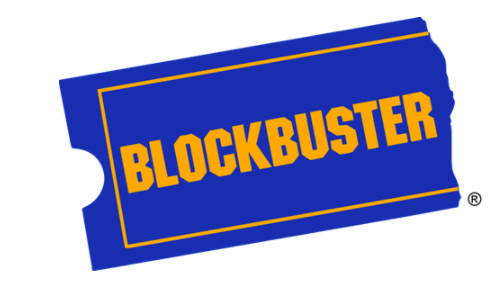Business
Delaena Kalevor – Why the “Breakage” Model is Profitable But Could Prove Unsustainable

I would like to introduce readers to a concept called “breakage.” It’s a common business strategy in fee-based or subscription-based services, such as gym memberships, video rentals, and annual fee credit cards. It’s also common in loyalty rewards programs.
Before I discuss this concept, I want you to think of how most businesses operate. The customers want a particular product or service. They buy it. They use it and the transaction is complete.
Let’s consider a basic example:
Let’s assume that you’re hungry and you want a bacon burger.
You go to the drive-through and buy a burger. You eat the burger.
You’re happy because you’re no longer hungry.
The drive-through franchise owner is happy because they generated a sale. This is how most businesses work.
The “breakage” model works the exact opposite way. With breakage, the company makes money when you do not use the product or service you purchased.

Let’s look at the gift card business for example: Let’s assume you buy a $25 gift card from Amazon.
You give the gift card to your friend for his birthday. How does Amazon make any money doing this?
Well, it turns out that for every $100 spent on buying a gift card, only $75 is actually ever redeemed. People who receive the gift card either lose the card, forget about the card, don’t use up the entire value of the card or the card expires.
This is breakage. Gift cards have an implied breakage of 25%. Meaning on average 25% of the value of gift cards never get redeemed. According to Delaena Kalevor, breakage can be very profitable. When someone purchases a gift card, the issuer of the gift card recognizes the gift card value as a contingent liability on their balance sheet. When the gift card value expires, the contingent liability is taken off the books and recognized as revenue. This has a direct accretive impact on net income, which can make breakage in the gift card and loyalty rewards industry extremely profitable.
The cashback and loyalty programs of credit card issuers also work in the same way and breakage is a valuable part of how these banks make money. They use tools like redemption caps (for example with American Express, you can’t redeem until you have $75 worth of points), points expiration, etc to enforce breakage. Most customers never reach that $75 redemption threshold before the points expire. This is an example of breakage. That’s why Delaena Kalevor’s favorite credit card is Discover Card. They have no breakage at all – no redemption caps and no points expiration.
Another example of breakage is health clubs or gyms. The parallel to that in the credit card industry is cards that have an annual fee.
Most fitness centers work on a monthly membership fee model.
I pay $50 a month to have access to the facility.
Whether I show up every day or never show up, I still pay the health club the same $50.
In the health club business, by far the most profitable customers in the industry are people who sign up as members but don’t actually show up to the gym.
This is also breakage. Similarly, credit card customers with an annual fee credit card, generate breakage income for the issuing bank when they do not use their card.
Breakage-based business models can be very profitable. Imagine a health club with 10,000 paying members where nobody actually shows up.
The problem with breakage business models is that you’re receiving value from customers without customers actually receiving value in return. Basically, you’re betting that customers are too lazy to recognize this.

Before Netflix and video streaming of movies became popular, a company called Blockbuster used to rent DVD movies to entertainment seekers. You would rent a movie for two nights for something like $5. If you forgot to return the movie on time, they would charge you a $3/day late fee.
Imagine renting five movies for the weekend and forgetting to return the movies for an entire week. Instead of spending $25, you end up spending $100.
This is a form of breakage too. In fact, at its peak, Blockbuster was generating 70% of its net income from late fees. Their profits came from customers who were too lazy or forgetful to return the DVD sitting in their car.
The problem with breakage though is that customers DO NOT like it.
When Netflix first started, they had a subscription-based DVD rental by mail business. For a flat fee each month, you could keep the movies you rented for as long as you wanted.
According to Delaena Kalevor, Netflix targeted Blockbuster’s most profitable customers — those that pay late fees — and ultimately put Blockbuster out of business.
Personally, I prefer a business where sales and profits come from happy customers, instead of unhappy ones that wish your way of business didn’t exist.
I don’t see the gift card, loyalty rewards, and health club businesses going out of business anytime soon. I don’t even expect their breakage business model to change. But Delaena Kalevor likes the idea of customers receiving good value for what they pay. The value should be mutually beneficial, like in the burger example. It’s a good thing to profit from really happy customers that are thrilled to do business with you. Blockbuster did not expect to go bankrupt. But they did. History has a funny way of repeating itself. The breakage based businesses out there should take lessons from Blockbuster’s experience.
Business
13 Reasons Investors Are Watching Phoenix Energy’s Expansion in the Williston Basin

As energy security becomes a growing priority in the United States, companies focused on domestic oil production are gaining attention from investors. One such company is Phoenix Energy, an independent oil and gas company operating in the Williston Basin, a prolific oil-producing region spanning North Dakota and Montana.
Phoenix Energy has established itself as a key player in this sector, expanding its footprint while offering structured investment opportunities to accredited investors. Through Regulation D 506(c) corporate bonds, the company provides investment options with annual interest rates ranging from 9% to 13%.
Here are 13 reasons why Phoenix Energy is attracting investor interest in 2025:
1. U.S. energy production remains a strategic priority
The global energy landscape is evolving, with a renewed focus on domestic oil and gas production to enhance economic stability and reduce reliance on foreign energy sources. The Williston Basin, home to the Bakken and Three Forks formations, continues to play a critical role in meeting these demands. Phoenix Energy has established an operational footprint in the basin, where it is actively investing in development and production.
2. Investment opportunities with fixed annual interest rates
Phoenix Energy bonds offer accredited investors annual interest rates between 9% and 13% through Regulation D 506(c). These bonds help fund the company’s expansion in the Williston Basin, where it acquires and develops oil and gas assets.
3. Record-breaking drilling speeds in the Williston Basin
Phoenix Energy has made significant strides in drilling efficiency, ranking among the fastest drillers in the Bakken Formation as of late 2024. By reducing drilling times, the company aims to optimize operations and improve overall production performance.
4. Expansion of operational footprint
Since becoming an operator in September 2023, Phoenix Energy has grown rapidly. As of March 2025, the company has 53 wells drilled and 96 wells planned over the next 12 months.
5. Surpassing production expectations
Phoenix Energy’s oil production has steadily increased. By mid-2024, its cumulative production had exceeded 1.57 million barrels, outpacing its total output for 2023. The company projected an exit rate of nearly 20,000 barrels of oil equivalent per day by the end of March 2025.
6. High-net-worth investor offerings
For investors seeking alternative investments with higher-yield opportunities, Phoenix Energy offers the Adamantium bonds through Reg D 506(c), which provides corporate bonds with annual interest rates between 13% and 16%, with investment terms ranging from 5 to 11 years, and a minimum investment of $2 million.
7. Experienced team with industry-specific expertise
Phoenix Energy’s leadership and technical teams include professionals with decades of oil and gas experience, including backgrounds in drilling engineering, land acquisition, and reservoir analysis. This level of in-house expertise supports the company’s ability to evaluate acreage, manage operations, and execute its long-term development plans in the Williston Basin.
8. Focus on investor communication and understanding
Phoenix Energy prioritizes clear investor communication. The company hosts webinars and provides access to licensed professionals who walk investors through the business model and operations in the oil and gas sector. These efforts aim to help investors better understand how Phoenix Energy deploys capital across mineral acquisitions and operated wells.
9. Managing market risk through strategic planning
The energy sector is cyclical, and Phoenix Energy takes a structured approach to risk management. The company employs hedging strategies and asset-backed financing to help mitigate potential fluctuations in the oil market.
10. Commitment to compliance
Phoenix Energy conducts its bond offerings under the SEC’s Regulation D Rule 506(c) exemption. These offerings are made available exclusively to accredited investors and are facilitated through a registered broker-dealer to support adherence to federal securities laws. Investors can review applicable offering filings on the SEC’s EDGAR database.
11. Recognition for business practices
As of April 2025, Phoenix Energy maintains an A+ rating with the Better Business Bureau (BBB) and is a BBB-accredited business. The company has also earned strong ratings on investor review platforms such as Trustpilot and Google Reviews, where investors often highlight clear communication and transparency.
12. A family-founded business with a long-term vision
Led by CEO Adam Ferrari, Phoenix Energy operates as a family-founded business with a focus on long-term investment strategies. The company’s leadership emphasizes responsible growth and sustainable development in the Williston Basin.
13. Positioned for long-term growth in the oil sector
With U.S. energy demand projected to remain strong, Phoenix Energy is strategically positioned for continued expansion. The company’s focus on efficient drilling, financial discipline, and structured investment offerings aligns with its goal of building a resilient and growth-oriented business.
Final thoughts
For investors looking to gain exposure to the U.S. oil and gas sector, Phoenix Energy presents an opportunity to participate in a structured alternative investment backed by the company’s operational expansion in the Williston Basin.
Accredited investors interested in learning more can attend one of Phoenix Energy’s investor webinars, which are hosted daily throughout the week. These sessions provide insights into market trends, risk management strategies, and investment opportunities.
For more information, visit the Phoenix Energy website.
Phoenix Capital Group Holdings, LLC is now Phoenix Energy One, LLC, doing business as Phoenix Energy. The testimonials on review sites may not be representative of other investors not listed on the sites. The testimonials are no guarantee of future performance or success of the Company or a return on investment. Alternative investments are speculative, illiquid, and you may lose some or all of your investment. Securities are offered by Dalmore Group member FINRA/SIPC. Dalmore Group and Phoenix Energy are not affiliated. See full disclosures.
This article contains forward-looking statements based on our current expectations, assumptions, and beliefs about future events and market conditions. These statements, identifiable by terms such as “anticipate,” “believe,” “intend,” “may,” “expect,” “plan,” “should,” and similar expressions, involve risks and uncertainties that could cause actual results to differ materially. Factors that may impact these outcomes include changes in market conditions, regulatory developments, operational performance, and other risks described in our filings with the U.S. Securities and Exchange Commission. Forward-looking statements are not guarantees of future performance, and Phoenix Energy undertakes no obligation to update them except as required by law.
-

 Tech4 years ago
Tech4 years agoEffuel Reviews (2021) – Effuel ECO OBD2 Saves Fuel, and Reduce Gas Cost? Effuel Customer Reviews
-

 Tech6 years ago
Tech6 years agoBosch Power Tools India Launches ‘Cordless Matlab Bosch’ Campaign to Demonstrate the Power of Cordless
-

 Lifestyle6 years ago
Lifestyle6 years agoCatholic Cases App brings Church’s Moral Teachings to Androids and iPhones
-

 Lifestyle4 years ago
Lifestyle4 years agoEast Side Hype x Billionaire Boys Club. Hottest New Streetwear Releases in Utah.
-

 Tech6 years ago
Tech6 years agoCloud Buyers & Investors to Profit in the Future
-

 Lifestyle5 years ago
Lifestyle5 years agoThe Midas of Cosmetic Dermatology: Dr. Simon Ourian
-

 Health6 years ago
Health6 years agoCBDistillery Review: Is it a scam?
-

 Entertainment6 years ago
Entertainment6 years agoAvengers Endgame now Available on 123Movies for Download & Streaming for Free
